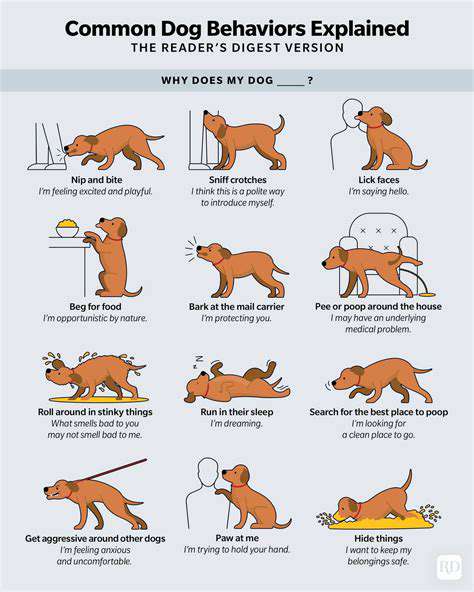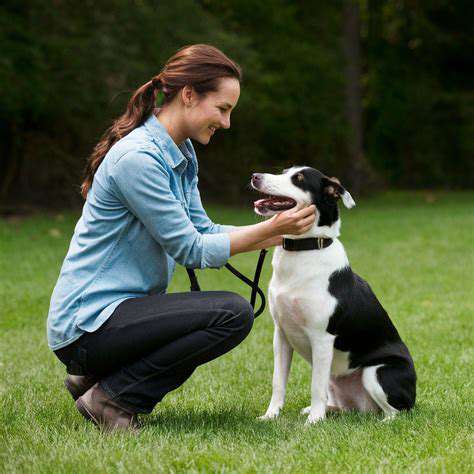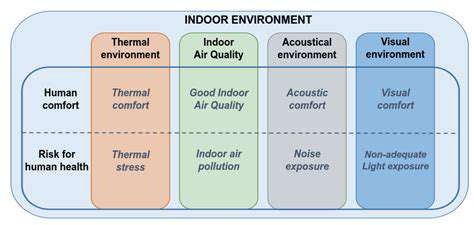Guide to Training Multiple Dogs at Once
Implementing Effective Training Techniques for Multiple Dogs
Understanding Individual Dog Needs
Successful multi-dog training requires recognizing and addressing each animal's unique requirements. Every dog has distinct personality traits, breed-specific tendencies, and past experiences that influence its learning style. A one-size-fits-all approach proves ineffective with diverse groups. Understanding these differences enables customization of training strategies to each dog's temperament, creating positive learning experiences.
Key factors include age, breed, previous training history, and any behavioral issues. Observing each dog's body language and communication signals helps assess comfort levels and potential anxieties. This proactive approach allows for method adjustments catering to individual sensitivities, ensuring a safe environment for all participants.
Establishing Clear Communication and Consistency
Training multiple dogs demands exceptional clarity and consistency in communication. Using concise commands and positive reinforcement techniques ensures all dogs understand desired behaviors. Inconsistency breeds confusion and conflicting responses, hindering progress. All trainers must use identical commands and reinforcement methods to prevent mixed signals.
Setting clear boundaries and expectations proves equally important. This includes defining appropriate behaviors, outlining consequences for undesirable actions, and ensuring universal adherence to these guidelines. Consistency builds trust and fosters a positive training atmosphere.
Utilizing Positive Reinforcement Techniques
Positive reinforcement serves as the foundation for effective multi-dog training. Rewarding desired behaviors with treats, praise, or toys encourages repetition and strengthens the action-reward connection. This method creates positive training associations, making the process more enjoyable for all dogs.
Focusing on positive reinforcement rather than punishment develops cooperative, trusting relationships. This approach reduces stress during training sessions and prevents negative associations. The resulting stronger bonds between handler and dogs enhance overall training effectiveness.
Creating a Structured Training Schedule
Implementing a structured training schedule is essential for managing multiple dogs efficiently. Regular routines provide predictability, helping dogs anticipate expectations. This structure maximizes session productivity while minimizing frustration.
Dividing sessions into shorter, focused blocks prevents overwhelm and maintains attention. Varying activities and locations keeps training engaging and prevents boredom. This dynamic approach sustains interest across multiple training sessions.
Addressing Potential Conflicts and Challenges
Multi-dog training often presents unique challenges, including inter-dog conflicts. Prompt recognition and resolution of these issues maintains harmony. Understanding root causes like resource guarding or attention competition enables effective solutions.
Separating dogs during training when necessary prevents aggression or competition. Providing individual attention ensures each dog feels valued, reducing conflict potential. Professional trainer consultation offers valuable insights for managing specific issues.
Managing Distractions and Maintaining Focus
Effective multi-dog training requires proactive distraction management. Environmental distractions can disrupt focus and consistency. Identifying potential distractions allows for their minimization.
Using quiet spaces or controlled environments enhances focus during sessions. Gradually increasing complexity while introducing controlled distractions, combined with continued positive reinforcement, develops the concentration needed for successful training.
Utilizing Group Training Strategies and Problem-Solving
Understanding Group Dynamics in Training
Successful group training depends on comprehending group dynamics. This includes recognizing individual learning styles, communication preferences, and potential conflicts. Facilitators must create safe, inclusive environments where participants feel comfortable sharing ideas. Addressing power imbalances or varying experience levels fosters collaboration. This understanding forms the basis of effective group training programs.
Defining Clear Objectives and Outcomes
Establishing specific objectives and desired outcomes precedes any group training initiative. What skills must participants acquire? Which knowledge gaps require filling? These measurable objectives should align with organizational or project goals. Clear expectations from the outset ensure focused, relevant training.
Well-defined outcomes enable effective program evaluation. Determining how to measure skill or knowledge acquisition transforms training from an event into an ongoing improvement process.
Selecting Appropriate Training Methods
Different groups and learning styles respond best to varied training methods. Consider whether interactive workshops, role-playing, case studies, or presentations best suit group needs. Method combinations often yield optimal results, maintaining engagement and accommodating diverse learning preferences. Proper selection ensures informative, memorable training experiences.
Facilitating Active Participation
Active participation drives successful group training. Facilitators should encourage questions, discussions, and collaborative problem-solving. Creating opportunities for experience sharing fosters engagement and ownership. This involvement enhances information retention and real-world application.
Utilizing Problem-Solving Techniques
Effective group training extends beyond knowledge transfer to equip participants with problem-solving skills. Incorporating scenario analysis, root cause identification, and solution brainstorming develops critical thinking. This practical approach extends training impact beyond the classroom.
Evaluating and Adapting the Training
Continuous evaluation refines group training strategies. Collecting participant feedback, assessing method effectiveness, and making necessary adjustments optimize program impact. This iterative process ensures relevance and effectiveness for future groups. Regular feedback loops enable continuous improvement, enhancing value for all participants.
Read more about Guide to Training Multiple Dogs at Once
Hot Recommendations
- Review: [Specific Brand] Small Animal Cage
- Why Rescuing Pets Saves Lives
- Best Pet First Aid Kits [What to Include]
- How to Help Stray Animals in Your Community
- Guide to Adopting a Pet When You Have Kids
- Top Reptile Heat Lamps
- Heartwarming Rescue Stories That Will Inspire You
- Review: [Specific Brand] Bird Cage
- Best Aquarium Filters [2025 Review]
- Review: [Specific Brand] Smart Litter Box




![Review: [Specific Brand] Dog Toy [Specific Type]](/static/images/33/2025-05/ValueforMoneyandAlternatives.jpg)






